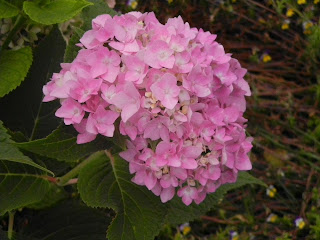Beyond Jack-o-Lanterns--What To Do With Pumpkins
So your garden yielded more pumpkins than you needed for Jack-o-lanterns this year. What do you do with the extra ones now that Halloween is over? My son thinks they are great for target practice, but I have a more practical use for them. Pumpkins are very nutritious. They are high in vitamins A & C, potassium, antioxidants, and fiber. They can be used to make pumpkin muffins, pumpkin cookies, and of course, pumpkin pie. I've even been known to substitute pumpkin for the squash in butternut squash soup, and the flavor was great.
When it comes to preserving pumpkin, I prefer freezing over canning. Home canning can't create the same, thick pureed pumpkin you get with commercially canned pumpkin. Instead the recommendations are to peel and cube raw pumpkin and can it that way. Too much work for me.
Instead, I bake pumpkin like I would squash. When the flesh is soft, I scoop it out of the rind, allow it to cool, and put it in freezer bags. A lot of instructions suggest pureeing the pumpkin before freezing it, but I don't bother. Freezing softens the pumpkin even more, and I find I can add the thawed pumpkin right to batters for muffins and cookies without pureeing it.
I freeze pumpkin in 1 C portions. That is the perfect amount for my pumpkin muffin recipe. For recipes calling for more, I simply thaw more bags.
Pumpkin that has been frozen and thawed becomes watery. For baked goods, like muffins and breads, I pour off as much as the liquid as I can and then add it to the batter. For pies and other desserts where the pumpkin is being made into a custard, texture and density are more important. For these I line a colander with cheese cloth and allow the pumpkin to drain for an hour or two.
 After the pumpkin has drained, I puree it in my food processor. I have had good luck making pie this way. If I'm in a hurry and don't want to take the time to drain the pumpkin, I pour off as much of the liquid as possible before pureeing. Then I add a little less milk than the recipe calls for. I've been successful with this method as well, but it can result in a custard that is softer than with the first method. But, hey, it still tastes good!
After the pumpkin has drained, I puree it in my food processor. I have had good luck making pie this way. If I'm in a hurry and don't want to take the time to drain the pumpkin, I pour off as much of the liquid as possible before pureeing. Then I add a little less milk than the recipe calls for. I've been successful with this method as well, but it can result in a custard that is softer than with the first method. But, hey, it still tastes good!




Comments
Post a Comment